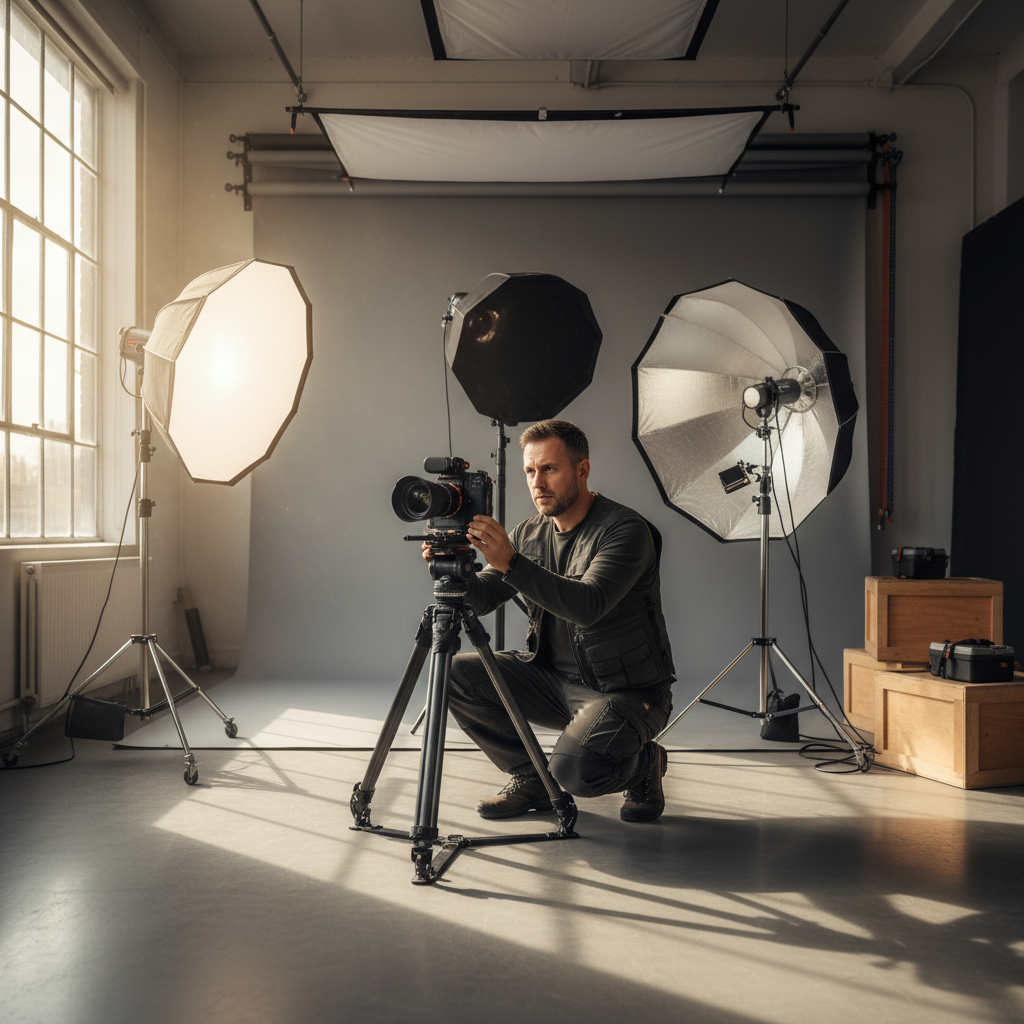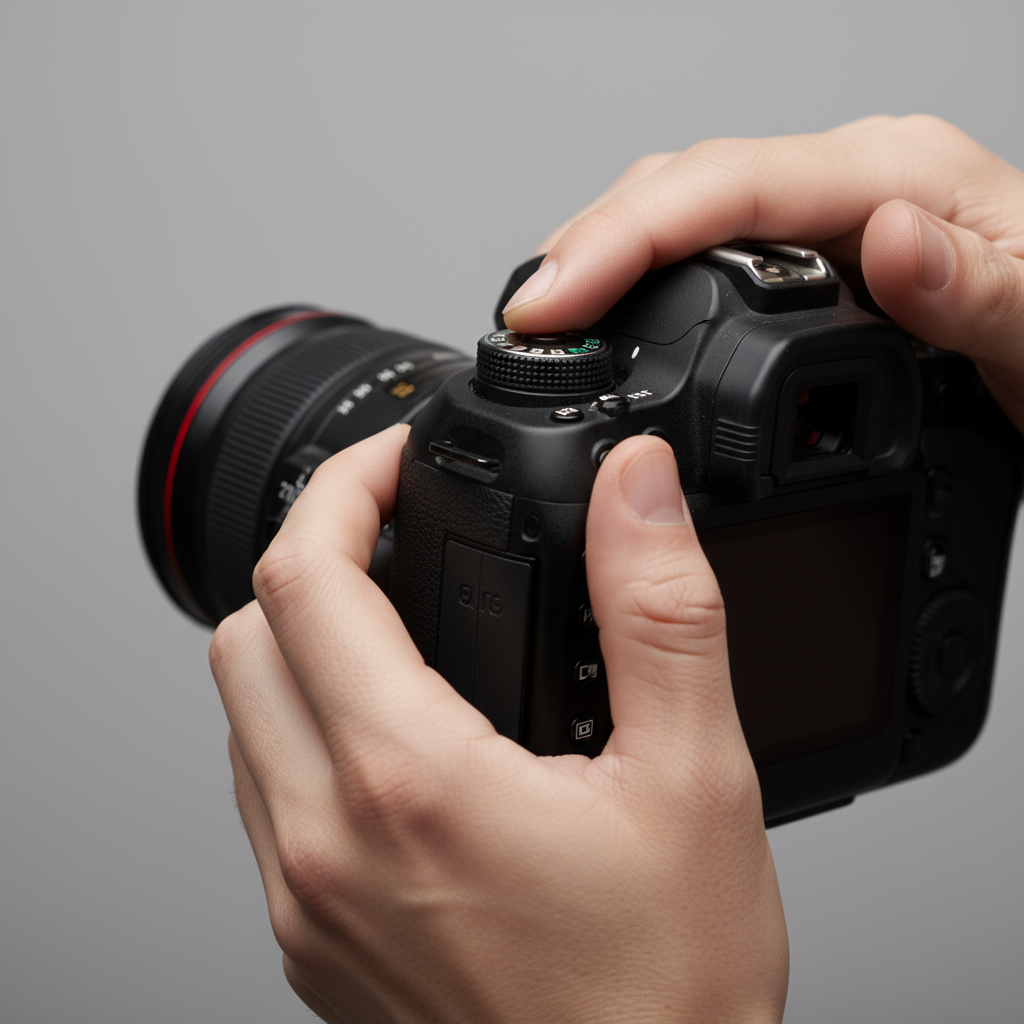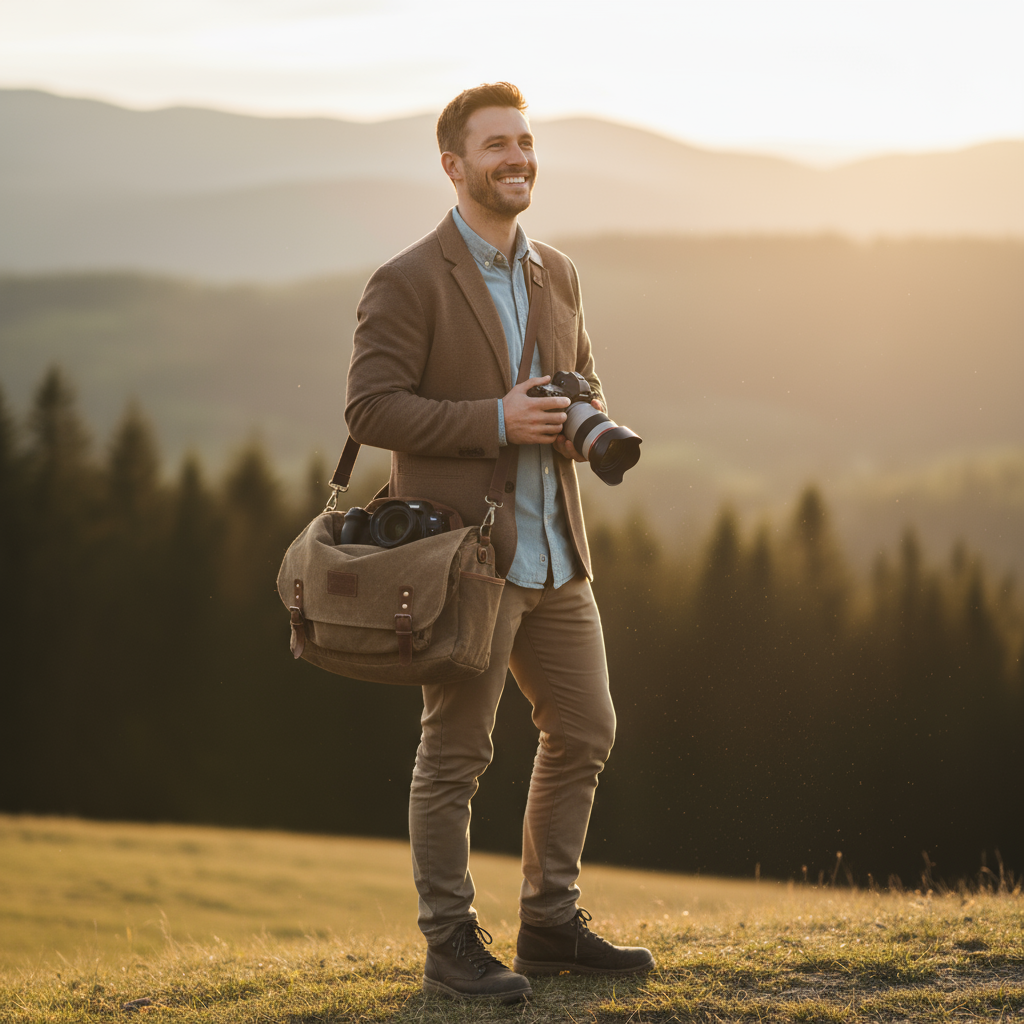
Table of Contents
Introduction
Picture this: you’re in the middle of an amazing shoot when someone trips over your light stand and breaks their ankle. Or maybe you’re packing up after a wedding and realize your favorite lens is missing. Worse yet? Your entire camera bag gets stolen from your car while you grab coffee. These aren’t just nightmare scenarios—they happen to photographers every day. And without the right insurance? You could be looking at thousands of dollars in losses.
Here’s the thing about photography insurance—it’s way more than just protecting your gear (though that’s obviously important). We’re talking about covering your back when clients slip and fall, when you accidentally damage someone’s property, or when life decides to throw you a curveball that could shut down your business. Equipment insurance keeps your cameras, lenses, and all those expensive accessories safe from theft, damage, or that heart-stopping moment when you realize something’s gone missing. But liability coverage? That’s what saves you when things go sideways during a shoot. If you’re new to this whole insurance thing, start with insurance basics—trust me, it’ll make everything else click into place.
Now, you might be thinking, “Can’t I just use regular insurance?” Well, you could try. But photography comes with some pretty unique risks that your standard homeowner’s policy just won’t cover. Think about it—you’re hauling expensive equipment to different locations, working with people in all kinds of situations, sometimes in places where anything could happen. That’s why photographers need specialized coverage. Want to know what options are out there? Check out the different types of insurance available—it’s like a menu of protection options. And if you’re running this as a business (even part-time), you’ll want to get familiar with small business insurance requirements before you get caught off guard.
Let’s be real about the risks we face. Equipment theft? It happens more than you’d think, especially when you’re working events or outdoor shoots. Accidental damage on location? One wrong step and your camera could take a tumble. Client injuries? Sometimes people just aren’t watching where they’re going around all your equipment. The good news is insurance basically says, “Don’t worry, we’ve got this”—transferring all that financial stress from your shoulders to theirs. Working from home? You’ll definitely want to understand insurance for home-based businesses because mixing your personal space with your professional gear creates some interesting coverage gaps that you need to fill.
What You’ll Learn in This Guide
Ready to become an insurance-savvy photographer? This guide breaks down everything you need to know, from the basics to the nitty-gritty details that could save you thousands. No confusing jargon or endless fine print—just straightforward advice that actually makes sense.
- Types of Insurance for Photographers: We’ll walk through equipment, liability, and business insurance—what each one actually does and why you can’t afford to skip any of them.
- Why Photographers Need Insurance: Spoiler alert: it’s not just about protecting your gear. We’ll cover the real risks that keep photographers up at night and how insurance helps you sleep better.
- How to Choose the Right Insurance Policy: No more guessing games. You’ll learn how to figure out what you actually need, compare quotes like a pro, and decode policy language so you know exactly what you’re buying.
- How to File a Claim and When to Consult an Agent: When something goes wrong (and eventually, something will), you’ll know exactly what to do. Plus, we’ll tell you when it’s time to call in the professionals.
By the time you’re done reading, insurance won’t feel like this scary, complicated thing anymore. Instead, you’ll have the confidence to protect your passion and your livelihood so you can focus on what you love most—creating images that matter.
We’re going to start by breaking down the different types of policies that make sense for photographers. Equipment coverage, liability protection, business insurance—each one serves a specific purpose, and understanding how they work together is key to building the right protection for your situation. If you shoot weddings, you might want to peek at insurance for wedding photographers too—lots of overlap with what we’ll cover here, but some unique considerations worth knowing about.
Choosing the right policy doesn’t have to feel like solving a puzzle blindfolded. Our guide on how to choose insurance coverage walks you through the whole process step by step. You’ll learn how to assess your actual risks (not just the ones that keep you up at night), compare quotes without getting overwhelmed, and avoid those sneaky pitfalls that can leave you underprotected when you need coverage most.
And here’s something most people don’t think about until it’s too late—knowing how to file a claim properly can mean the difference between getting paid quickly and fighting for months to get what you’re owed. Our breakdown of the insurance claims process gives you the insider knowledge to handle paperwork, meet deadlines, and deal with any bumps along the way. Plus, we’ll help you figure out when it’s worth talking to an insurance agent—because sometimes a professional perspective can save you more money than you’d spend on their advice.

Introduction
Let’s be honest—as a photographer, your gear is your lifeline. That $3,000 lens? Your trusty camera body? Those studio lights that took you months to save for? They’re not just equipment—they’re your business. And here’s the thing that keeps many photographers up at night: what happens when something goes wrong?
Whether you’re just starting out or you’ve been shooting for years, insurance isn’t just some boring paperwork you can put off. It’s actually one of the smartest investments you can make for your photography business. Think of it as a safety net that lets you focus on what you do best—creating amazing images—without constantly worrying about “what if.”
So let’s dive into the world of photography insurance together. We’ll break down exactly what types of coverage you need, how to pick the right policy, and why getting this sorted now will save you major headaches (and money) down the road. Trust me, your future self will thank you.
Types of Insurance for Photographers
Here’s the reality: photographers face risks that most people never think about. Your expensive gear could get stolen from your car. A client might trip over your tripod and decide to sue. Your hard drive could crash right before delivering a wedding album. Fun stuff, right?
The good news? There’s insurance designed specifically for these situations. But before we get into the nitty-gritty, it’s worth checking out these insurance basics if you’re new to this whole thing. And if you want the full picture of what’s out there, this guide to types of insurance covers everything from property protection to liability coverage.
Now, let’s talk about what really matters for photographers. Equipment insurance is probably what you’re thinking about first—and for good reason. When your camera gear costs more than most people’s cars, you need protection that actually works. This isn’t just about replacing a broken lens; it’s about getting back to work quickly when disaster strikes.
But here’s what many photographers overlook: liability insurance. Picture this—you’re shooting an outdoor wedding, someone trips over your equipment, and suddenly you’re facing a lawsuit. Not exactly the creative fulfillment you signed up for, right? That’s where liability coverage becomes your best friend.
Key Aspects of Types of Insurance
Alright, let’s break down the insurance types that actually matter for your photography business:
- Equipment Insurance: This is your gear’s bodyguard. Whether your camera gets stolen from a coffee shop or your lens takes a tumble down some stairs, equipment insurance has your back. The key here is getting coverage that follows you everywhere—not just when you’re at home. Want to see how this works in practice? Check out how insurance for wedding photographers handles the unique challenges of event shooting.
- Liability Coverage: Think of this as your “oops” insurance. If your work accidentally causes someone to get hurt or damages their property, liability coverage steps in to handle the legal mess. It’s especially crucial if you shoot on location or work with clients at their venues. (And yes, accidents happen to the most careful photographers—I’ve seen it.) This type of protection is similar to what you’ll find in insurance for business consultants, just tailored for our creative world.
- Business Insurance: This is the big-picture stuff. Beyond just your gear and liability, business insurance covers things like lost income if you can’t work, legal expenses, and even mistakes in your work (yes, that’s a thing). If you’re running a real photography business—not just a side hustle—this coverage is non-negotiable.
- Insurance Deductibles: Here’s where math meets real life. Your deductible is what you pay out of pocket before insurance kicks in. Choose too low, and your premiums skyrocket. Choose too high, and you might not be able to afford a claim when you need it. Get the inside scoop on insurance deductibles to find that sweet spot.
Once you’ve got a handle on these basics, it’s smart to learn about the insurance claims process. Because when something does go wrong (and hopefully it never will), you’ll want to know exactly how to get your money fast.
One thing to keep in mind—your insurance needs aren’t one-size-fits-all. A wedding photographer who travels constantly has different risks than a studio portrait photographer. Someone shooting extreme sports needs different coverage than someone doing newborn sessions. The trick is matching your insurance to your actual business, not just buying whatever sounds good.
Now that you know what types of insurance are out there, let’s talk about the fun part—actually picking a policy that makes sense for your business and budget.
How to Choose the Right Insurance Policy
Okay, so you know you need insurance. But walking into this market can feel like trying to decode a foreign language. Every company claims to have the “best” coverage, and the fine print might as well be written in ancient Greek.
Here’s my advice: start with the guide on how to choose insurance coverage. It’ll walk you through the process step-by-step, which honestly makes this whole thing way less overwhelming.
One thing most photographers don’t think about? The insurance underwriting process. This is basically where the insurance company decides whether you’re worth the risk and how much to charge you. Understanding how this works can help you present your business in the best light and maybe even save some money on premiums.
And here’s something nobody talks about until it’s too late—make sure you understand the insurance cancellation policy. You want to know how to get out if you need to, and what happens if the insurance company decides to drop you.
Key Aspects of Choosing Insurance Policies
When you’re ready to actually pick a policy, here’s what you need to focus on:
- Assess Your Risks: Be brutally honest about what could go wrong in your business. Do you shoot in risky locations? Is your gear worth more than your car? Do you work with challenging clients? (We all have a few.) Your risk assessment determines what coverage you actually need versus what sounds nice to have.
- Compare Quotes and Coverage: This is where the rubber meets the road. Get at least three quotes, but don’t just look at the price. Check the coverage limits, see what’s excluded, and compare deductibles. Sometimes paying a little more upfront saves you thousands later.
- Understand Policy Terms: I know, I know—reading insurance policies is about as fun as watching paint dry. But you need to know what’s covered, what’s not, and how to file a claim. Pay special attention to exclusions—that’s usually where the surprises hide.
- Evaluate Customer Service and Support: When your camera gets stolen the night before a big shoot, you want an insurance company that actually answers the phone. Check out these insurance customer service insights to know what to look for in terms of support quality.
If you’re just starting your photography business, the insurance for startups guide is incredibly helpful. It covers the basics of getting coverage when you’re small, managing costs, and scaling your insurance as you grow.
And while we’re talking about business finances, don’t forget that insurance premiums are typically tax-deductible for your business. If you’re trying to understand more about business deductions, learning about things like how to calculate mortgage interest for tax deductions can give you insight into maximizing your business expenses. For more general financial education, these finance podcasts for beginners are great for understanding how insurance fits into your overall business financial strategy.

Here’s the reality about photography: it’s one of those careers where your passion meets some serious financial risks. And honestly? That’s exactly why we’ve spent this entire guide talking about insurance. Because whether you’re shooting weddings, portraits, or commercial work, you’re walking around with thousands of dollars of equipment while being responsible for other people’s most precious moments. That’s a lot of pressure—and a lot of potential liability.
Think about your gear for a second. Your camera body, those expensive lenses, your lighting setup—it all adds up fast. Equipment insurance isn’t just a nice-to-have; it’s your financial lifeline when something goes wrong. And trust me, things do go wrong. Theft happens (even from locked cars). Accidents happen. That moment when you watch your camera tumble down a flight of stairs? Yeah, insurance is what stands between you and a massive unexpected expense. But it’s not just about the gear. Liability insurance protects you when someone trips over your light stand or when a client claims you missed their big moment. Business insurance? That’s your safety net for everything else—like when a pandemic shuts down the wedding industry for months.
Every photographer faces different risks, and that’s why generic insurance policies just don’t cut it. Wedding photographers deal with drunk guests and outdoor venues. Portrait photographers work in clients’ homes. Commercial photographers handle expensive products. Your insurance needs to match your reality, not some one-size-fits-all approach. The goal is simple: transfer the financial stress to your insurer so you can focus on what you love doing. We’ve covered how to choose the right policy—assess your actual risks (be honest with yourself), shop around and compare quotes (don’t just go with the first option), read the fine print (yes, even the boring parts), and pick an insurer that actually answers the phone when you need them. When claims happen, knowing the process inside and out means faster payouts and less downtime for your business.
Ready to take action? Start with coverage that matches your specialty. If you’re shooting weddings, check out our guide on insurance for wedding photographers—it covers all those event-specific scenarios that keep you up at night. Not sure where to begin with choosing coverage? Our detailed walkthrough on how to choose insurance coverage breaks down everything from evaluating your needs to comparing policies without getting overwhelmed. And here’s something most photographers don’t think about until it’s too late: understanding insurance deductibles can save you money on premiums while keeping your out-of-pocket costs manageable. When disaster strikes (and hopefully it won’t), knowing the insurance claims process means you’ll get paid faster and get back to shooting sooner. But don’t stop at insurance—build yourself a proper emergency fund too. Our guide on how to build an emergency fund shows you how to create a financial buffer for those gaps that even great insurance can’t cover.
Look, insurance isn’t the most exciting part of running a photography business. But it’s what lets you sleep at night knowing that one bad day won’t destroy everything you’ve built. You’re not just protecting equipment—you’re protecting your livelihood, your reputation, and your ability to keep doing what you love. Don’t wait until something happens to get covered. Review your needs regularly (your business grows, your risks change), and don’t be afraid to ask questions when something doesn’t make sense. The photography world is unpredictable enough without adding financial worry to the mix. Get your insurance sorted now, then get back to creating those amazing images that made you fall in love with photography in the first place.
Frequently Asked Questions
-
Do I need insurance if I only shoot occasionally?
- Yes, even occasional photographers face risks such as equipment damage or liability claims. Having insurance helps cover these unexpected events and protects your investments.
-
What equipment is typically covered?
- Most photography insurance policies cover cameras, lenses, lighting, and related accessories used for your business. Coverage details vary by policy, so read carefully to confirm.
-
How does liability insurance protect me?
- Liability insurance protects you from financial loss by covering legal claims if someone is injured or property is damaged during your photography work or shoots.
-
Can I customize my insurance policy?
- Yes, many insurers offer flexible policies that can be tailored to your specific equipment, services, and business risks to provide the coverage you need without unnecessary costs.
-
How do I file a claim?
- Contact your insurer promptly after an incident and provide detailed documentation including photos, receipts, and descriptions. Follow your policy’s claim process to ensure timely resolution.
